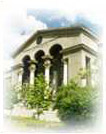| ENG RUS | Timus Online Judge |
1649. Abstractionism to the PeopleTime limit: 1.0 second Memory limit: 64 MB “I will never paint again,” Dunno answered. “I paint
and paint, and nobody is ever thankful. Everybody keeps scolding
me.” The great abstractionist artist Herman Brooks invented a new style in
painting—bactorgaphy. Of course, you want to know what kind of a style it
is. That's simple: every painting is live, quite literally. Herman paints with
bacteria.
Such a painting is a real work of art. It's a sight worth seeing—the
fascinating canvas plays with two or three hundred different shades. But how
could this wonder be shown to the people? Photography or video just can't
convey the entire range of colors, and Herman still doesn't have a museum
(modern art custodians don't like innovative ideas, and there's no point
arguing with them). In addition, the painting can be seen in detail only under
a microscope. Finally, it was decided to make several thousand copies of the
best paintings and sell them as souvenirs. However, there is a problem. Herman,
as a real creator, doesn't want to make copies himself, and the hired
bioengineers unanimously claim that a copy can only be made if the exact
sequence of populating the canvas with bacteria is known. Your task is to
restore this sequence.
To help you fulfill the task, the bioengineers provided you with the
following information.
InputThe first line contains the dimensions of the canvas
n and m ( OutputIf it is impossible to obtain the described painting by means of the procedure
available to the bioengineers, output “No”. If you managed to find
a sequence that makes it possible to create a copy of Herman's masterpiece,
output “Yes” in the first line, and in the following lines give
this sequence. Each of these lines must contain two integers, which are the
number of line and number of column of the next cell to be populated.
Sample
Problem Author: Eugene Krokhalev Problem Source: NEERC 2008, Eastern subregion quarterfinals Tags: hardest problem |
